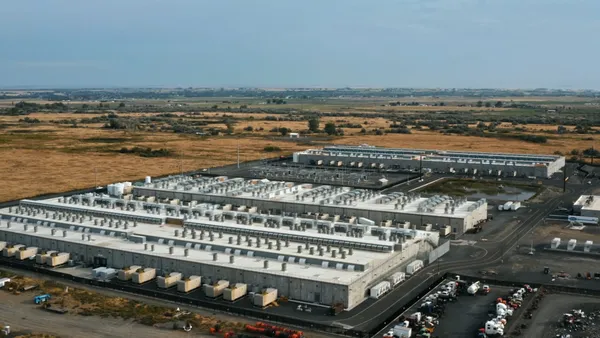Dive Brief:
- Idaho Power's long term Integrated Resource Plan (IRP) calls for the utility to shutter two coal plants and includes about 400 MW of demand response capacity, a move reflective of the current trends towards incorporating more renewables and energy efficiency, the Idaho Statesman reports.
- The utility is also considering a community solar project, which it said would address shifting customer preferences rather than an immediate need for additional power.
- The state's Public Utilities Commission (PUC) is expected to weigh in on the plan soon with the comment period ending earlier this week.
Dive Insight:
Idaho Power's move away from heavy coal reliance was prominent in its 2015 integrated resource plan, which also showcased a community solar project as part of its planned future resource portfolio.
Idaho Power's CEO Darrel Anderson took the helm last year, and some say its subsequent plan reflects the difference he has been making at the coal-reliant utility.
The plan calls for the company to close two coal fired plants, possibly develop a community solar project and contract for 400 MW of demand response. Idaho Power, along with co-owner Portland General Electric, have opted to close a coal facility in Boardman, Ore., by 2020. The utility also calls for closing the North Valmy facility in Nevada, which is co-owned by NV Energy, by 2025.
With 461 MW of solar from the Public Utility Regulatory Policy Act (PURPA) projects set to come online in 2016, the utility has said its move to build a community solar project is purely based on customer demand, not the utility's resource needs. At least 141 MW of such PURPA projects were terminated by the state's regulators based on inaction by the third party providers, according to the plan. The IRP outlines several potential avenues to build the community solar project.
"Several possibilities exist for the structure of a solar pilot project," the utility said in its IRP. "One option Idaho Power is interested in pursuing would be to develop a PV project at a substation near existing load. This concept would not require the addition of new transmission resources and would have
economy-of-scale advantages over distributed rooftop installations."
The project's cost could be subsidized by allowing participating customers to voluntarily buy the output from the project and invest in renewable energy, according to the plan. The long pipeline of PURPA wind and solar projects has cut down on the utility's need for more renewable energy, the plan said.
Idaho Power led the way to cut down PURPA contract lengths earlier this year, prompting two other utilities to sign on, including PacifiCorp subsidiary Rocky Mountain Power. Idaho's utility regulators approved whittling the contract lengths down to two years from the previous 20-year contract length. The move garnered swift protest from third party providers worried that the decision will hurt their ability to build projects and sell the power to the utilities.













